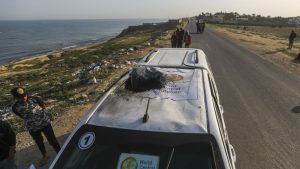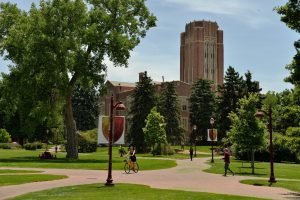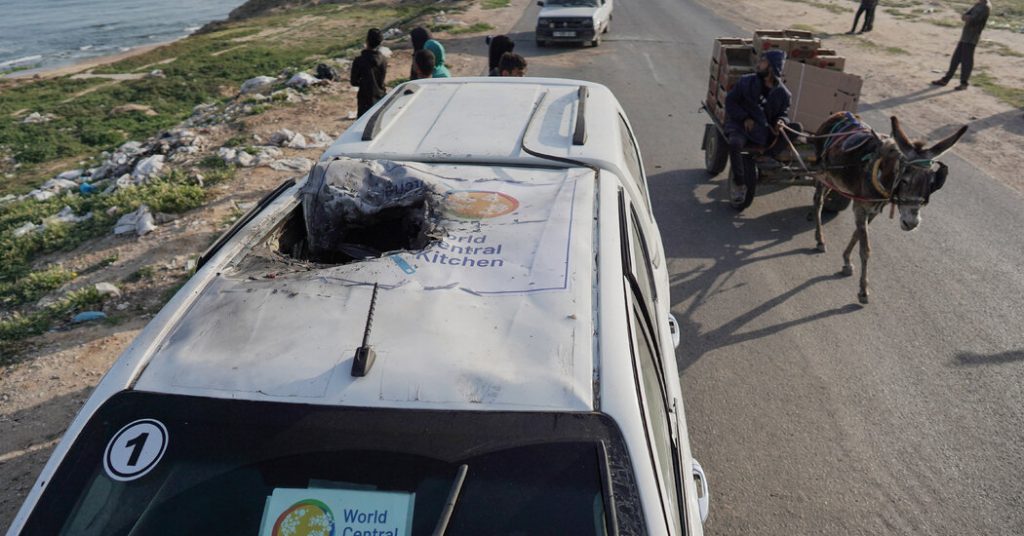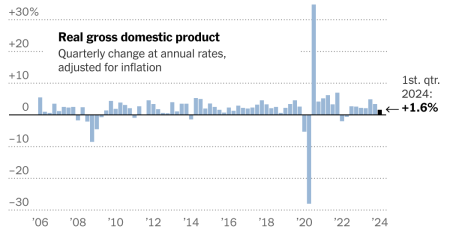Seven aid workers with World Central Kitchen were tragically killed in Gaza when their convoy was hit by an Israeli strike. The convoy, consisting of three vehicles, had just left a food warehouse in Deir al-Balah when it came under fire late Monday night or just after midnight on Tuesday. The World Central Kitchen staff members were leaving after unloading more than 100 tons of food brought by sea. Video footage shows at least two destroyed vehicles marked with the charity’s logo, leaving the exact munition used unclear.
Among the victims were six foreign nationals, including individuals from Australia, Poland, Britain, the United States, and Canada, as well as a Palestinian. Prime Minister Anthony Albanese of Australia confirmed that Zomi Frankcom, a senior manager at World Central Kitchen, was among the deceased. Palestinian medics retrieved the bodies of the victims and took them to the hospital in Deir al-Balah, with plans to eventually transport them out of Gaza through Egypt. The incident has sparked an investigation by the Israeli military’s Fact Finding and Assessment Mechanism.
Israeli Prime Minister Benjamin Netanyahu acknowledged the tragic incident, referring to it as a case of Israeli forces unintentionally harming innocent people in Gaza. While the circumstances are still being investigated at the highest levels, the military has pledged to look into the matter further to prevent such incidents from happening again. Despite expressing condolences to World Central Kitchen and the families of the victims, Admiral Hagari stopped short of formally claiming responsibility for the strike that led to the aid workers’ deaths.
The strike on the World Central Kitchen convoy has raised concerns about the safety of humanitarian workers amidst ongoing conflict in Gaza. The incident highlights the challenges faced by aid organizations operating in conflict zones and the need for transparent investigations to ensure accountability for such tragic events. The Israeli military’s response to the incident and the level of cooperation with international partners will be closely monitored as the investigation progresses. The loss of lives in this incident serves as a reminder of the risks faced by those working to provide essential aid in crisis situations.
The World Central Kitchen community is mourning the loss of their colleagues and working to provide support to their families and loved ones during this difficult time. The organization’s commitment to providing food aid in crisis-affected areas remains unwavering, even in the face of tragedy. The international community has expressed condolences and support for World Central Kitchen and the families of the victims, stressing the importance of protecting humanitarian workers and ensuring their safety in conflict zones. As investigations continue, the focus will be on understanding the circumstances of the incident and taking steps to prevent similar tragedies in the future.
















